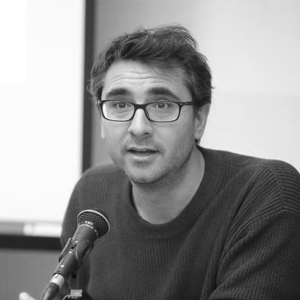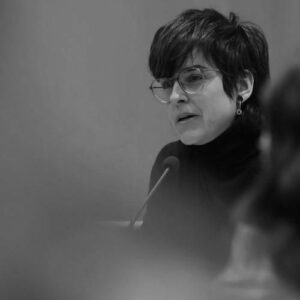 Por Carles Llorens.
Por Carles Llorens.
El trabajo realiza un análisis de la evolución de las políticas sobre concentración en España desde la liberalización de la televisión en 1989. La tesis principal es que la combinación inicial de limitaciones en la propiedad y la no existencia de normas anti-concentración entre los diversos medios, ha propiciado la existencia de grupos medianos altamente competitivos que explican el sistema mediático español. Abstract
As a young democracy, Spain had huge expectations for media pluralism after the end of Franco’s dictatorship in 1975. However, structural and historical forces have imposed a more prosaic evolution, where the regulation of media concentration has had more to do with media groups’ interests than societal goals. At first, Spain’s media ownership regulations laid down important limitations on media ownership, but as technology developed, these constraints were progressively relaxed through a large set of complex legal amendments in non-specific legislative acts. However, the absence of cross-media ownership rules is crucial to the understanding of the Spanish media system’s dynamics and players. Spanish media have evolved from small newspaper companies to big multimedia groups. Fierce competition in an increasingly fragmented scenario is the result. This absence has led to the creation of five or six multimedia groups in Spain, which have made structural pluralism possible at a national level.
FULL TEXT



 Profesora Titular de la Facultad de Comunicación de la Universidad de Castilla-La Mancha, en la que es Delegada del Rector para Comunicación Institucional. Responsable del grupo de investigación GEOMEDIAV, imparte las asignaturas ‘Estructura Global de los Medios’ e ‘Investigación Básica y Aplicada en Comunicación' en los grados de Periodismo, Comunicación Audiovisual y Doble Grado en Comunicación Audiovisual y Periodismo. Socia de ULEPICC-España desde el año 2015, ha participado activamente en la vida asociativa desde su incorporación, destacando su papel como Tesorera desde febrero de 2021. Comprometida con la perspectiva crítica de la economía política de la comunicación, a lo largo de su trayectoria académica ha forjado un perfil especializado en el estudio del servicio audiovisual público. Su trabajo ha sido reconocido con varios premios académicos como el Primer Premio ATIC 2020 a la Mejor Tesis Doctoral en Información y Comunicación o el Article of the Year Award 2022 otorgado anualmente por la European Journal of Communication, revista de referencia en el campo.
Profesora Titular de la Facultad de Comunicación de la Universidad de Castilla-La Mancha, en la que es Delegada del Rector para Comunicación Institucional. Responsable del grupo de investigación GEOMEDIAV, imparte las asignaturas ‘Estructura Global de los Medios’ e ‘Investigación Básica y Aplicada en Comunicación' en los grados de Periodismo, Comunicación Audiovisual y Doble Grado en Comunicación Audiovisual y Periodismo. Socia de ULEPICC-España desde el año 2015, ha participado activamente en la vida asociativa desde su incorporación, destacando su papel como Tesorera desde febrero de 2021. Comprometida con la perspectiva crítica de la economía política de la comunicación, a lo largo de su trayectoria académica ha forjado un perfil especializado en el estudio del servicio audiovisual público. Su trabajo ha sido reconocido con varios premios académicos como el Primer Premio ATIC 2020 a la Mejor Tesis Doctoral en Información y Comunicación o el Article of the Year Award 2022 otorgado anualmente por la European Journal of Communication, revista de referencia en el campo. Profesora Titular del Departamento de Comunicació Audiovisual i Publicitat de la Facultat de Ciències de la Comunicació de la Universitat Autònoma de Barcelona (UAB). Ha sido secretaria académica de Facultad y vicedecana de Economía y Servicios (2022-2024) y coordinadora del grado de Comunicación Audiovisual (2013-2017). Miembro de la Societat Catalana de Comunicació desde 1997 (1998-2003, vocal responsable de publicaciones) y ULEPICC España desde 2008 (vocal de 2008 a 2010). Sus principales líneas de investigación son las industrias culturales (especialmente la industria radiofónica), la estructura del sistema audiovisual, el servicio público audiovisual y las TIC. Ha participado en diversas investigaciones con entidades públicas y privadas, como por ejemplo: Plataformas del audiovisual y juventud: contenidos, estrategias empresariales y percepción de la audiencia (2019-2022); Mapping Radio Stations across the EBU Area (2021); Broadcasting in the Post-Broadcast Era: Policy, Technology, and Content Production (Suomen Akatemia-Academy of Finland,2013-2017); Transformaciones del sistema de radio y televisión en España en el contexto de la digitalización (1997-2007) (2007-2010, como IP); La comunicación local en el entorno digital en España. Transformaciones del sistema audiovisual local (2003-2006).
Profesora Titular del Departamento de Comunicació Audiovisual i Publicitat de la Facultat de Ciències de la Comunicació de la Universitat Autònoma de Barcelona (UAB). Ha sido secretaria académica de Facultad y vicedecana de Economía y Servicios (2022-2024) y coordinadora del grado de Comunicación Audiovisual (2013-2017). Miembro de la Societat Catalana de Comunicació desde 1997 (1998-2003, vocal responsable de publicaciones) y ULEPICC España desde 2008 (vocal de 2008 a 2010). Sus principales líneas de investigación son las industrias culturales (especialmente la industria radiofónica), la estructura del sistema audiovisual, el servicio público audiovisual y las TIC. Ha participado en diversas investigaciones con entidades públicas y privadas, como por ejemplo: Plataformas del audiovisual y juventud: contenidos, estrategias empresariales y percepción de la audiencia (2019-2022); Mapping Radio Stations across the EBU Area (2021); Broadcasting in the Post-Broadcast Era: Policy, Technology, and Content Production (Suomen Akatemia-Academy of Finland,2013-2017); Transformaciones del sistema de radio y televisión en España en el contexto de la digitalización (1997-2007) (2007-2010, como IP); La comunicación local en el entorno digital en España. Transformaciones del sistema audiovisual local (2003-2006). Profesor Permanente Laboral del Departamento de Periodismo 2 de la Facultad de Comunicación de la Universidad de Sevilla. Doctor en Comunicación dentro del programa “Comunicación y Crítica de la Cultura”, es también Experto Universitario en “Comunicación y Desarrollo Local”. Cuenta con una amplia experiencia investigadora participando en proyectos de ámbito internacional y desarrollado estancias de investigación en Brasil, México, Francia, Estados Unidos y Ecuador. Sus publicaciones y proyectos de investigación se centran en las políticas públicas en sociedad de la información y la apropiación social de las nuevas tecnologías desde una perspectiva crítica. Coordinador de la sección de comunicación y cultura de la Fundación de Investigaciones Marxistas, forma también parte del Grupo Interdisciplinario de Estudios en Comunicación, Política y Cambio Social (COMPOLITICAS) y del Grupo de Trabajo del Centro Latinoamericano de Ciencias Sociales “Apropiación de Tecnologías Digitales e Interseccionalidades”. Miembro de ULEPICC desde su fundación.
Profesor Permanente Laboral del Departamento de Periodismo 2 de la Facultad de Comunicación de la Universidad de Sevilla. Doctor en Comunicación dentro del programa “Comunicación y Crítica de la Cultura”, es también Experto Universitario en “Comunicación y Desarrollo Local”. Cuenta con una amplia experiencia investigadora participando en proyectos de ámbito internacional y desarrollado estancias de investigación en Brasil, México, Francia, Estados Unidos y Ecuador. Sus publicaciones y proyectos de investigación se centran en las políticas públicas en sociedad de la información y la apropiación social de las nuevas tecnologías desde una perspectiva crítica. Coordinador de la sección de comunicación y cultura de la Fundación de Investigaciones Marxistas, forma también parte del Grupo Interdisciplinario de Estudios en Comunicación, Política y Cambio Social (COMPOLITICAS) y del Grupo de Trabajo del Centro Latinoamericano de Ciencias Sociales “Apropiación de Tecnologías Digitales e Interseccionalidades”. Miembro de ULEPICC desde su fundación. Graduado en Comunicación Audiovisual con un máster en Investigación Aplicada a Medios de Comunicación, ambos estudios en la Universidad Carlos III de Madrid. Actualmente cuenta con un contrato predoctoral para la formación de doctores en el mismo centro (PRE2020-096187), donde imparte docencia en el grado en Comunicación Audiovisual. Es integrante del grupo de investigación ‘Diversidad Audiovisual’ y su tesis doctoral se vincula al proyecto de investigación ‘Diversidad y servicios audiovisuales bajo demanda por suscripción’ (PID2019-109639RB-I00). En su investigación doctoral analiza las estrategias de localización al mercado español desplegadas por las principales compañías transnacionales de origen estadounidense que prestan servicios de vídeo bajo demanda en el país. Su principal línea de investigación es la diversidad en el ámbito de las industrias culturales y de la comunicación. Su trabajo de fin de máster recibió el Premio Fundación SGAE 2018 a Mejor Trabajo de Investigación. Asimismo, ha trabajado como consultor SEO en diversas agencias de marketing online.
Graduado en Comunicación Audiovisual con un máster en Investigación Aplicada a Medios de Comunicación, ambos estudios en la Universidad Carlos III de Madrid. Actualmente cuenta con un contrato predoctoral para la formación de doctores en el mismo centro (PRE2020-096187), donde imparte docencia en el grado en Comunicación Audiovisual. Es integrante del grupo de investigación ‘Diversidad Audiovisual’ y su tesis doctoral se vincula al proyecto de investigación ‘Diversidad y servicios audiovisuales bajo demanda por suscripción’ (PID2019-109639RB-I00). En su investigación doctoral analiza las estrategias de localización al mercado español desplegadas por las principales compañías transnacionales de origen estadounidense que prestan servicios de vídeo bajo demanda en el país. Su principal línea de investigación es la diversidad en el ámbito de las industrias culturales y de la comunicación. Su trabajo de fin de máster recibió el Premio Fundación SGAE 2018 a Mejor Trabajo de Investigación. Asimismo, ha trabajado como consultor SEO en diversas agencias de marketing online. Doctora en Comunicación por la Universidad de Valladolid y profesora ayudante en la Universitat de València. Es coordinadora académica de tercero en el Grado en Periodismo, en el que imparte Periodismo Digital. También participa en la docencia del
Doctora en Comunicación por la Universidad de Valladolid y profesora ayudante en la Universitat de València. Es coordinadora académica de tercero en el Grado en Periodismo, en el que imparte Periodismo Digital. También participa en la docencia del Profesora ayudante doctora en el Departamento de Ciencias de la Comunicación de la Universidade de Santiago de Compostela, del que es secretaria desde octrubre de 2024, y forma parte del grupo de investigación Novos Medios. Sus principales líneas de investigación son los medios de comunicación de servicio público, que estudia desde la perspectiva de creación de valor público, y las políticas de comunicación. Ha publicado en revistas de impacto como Journalism Studies, European Journal of Communication, Comunicar, o Journal of Information Policy. Ha realizado estancias de investigación en el Center for Media Data and Society de la Central European University (entonces en Budapest) y en el Hans-Bredow-Institut (Hamburgo). Actualmente forma parte de la directiva de la Asociación Galega de Investigadores e Investigadoras en Comunicación (AGACOM) y de la International Association of Public Media Researchers (IAPMR), y es parte de la comunidad de expertos del Media and Journalism Research Center.
Profesora ayudante doctora en el Departamento de Ciencias de la Comunicación de la Universidade de Santiago de Compostela, del que es secretaria desde octrubre de 2024, y forma parte del grupo de investigación Novos Medios. Sus principales líneas de investigación son los medios de comunicación de servicio público, que estudia desde la perspectiva de creación de valor público, y las políticas de comunicación. Ha publicado en revistas de impacto como Journalism Studies, European Journal of Communication, Comunicar, o Journal of Information Policy. Ha realizado estancias de investigación en el Center for Media Data and Society de la Central European University (entonces en Budapest) y en el Hans-Bredow-Institut (Hamburgo). Actualmente forma parte de la directiva de la Asociación Galega de Investigadores e Investigadoras en Comunicación (AGACOM) y de la International Association of Public Media Researchers (IAPMR), y es parte de la comunidad de expertos del Media and Journalism Research Center.